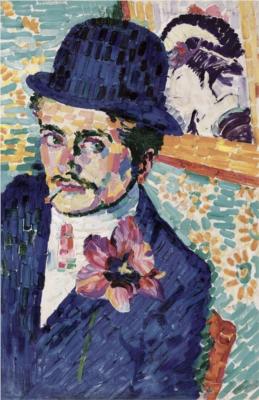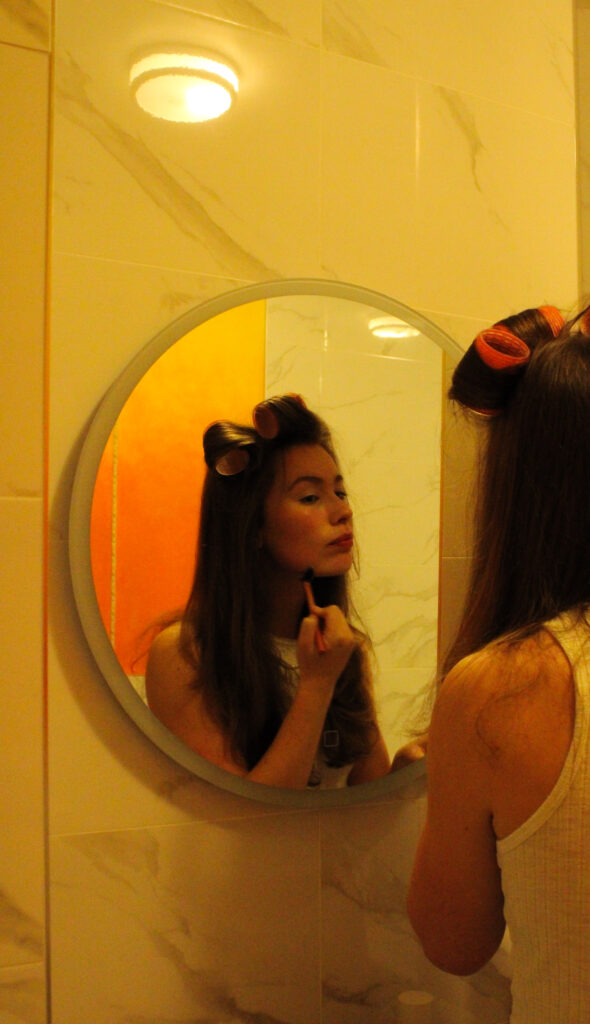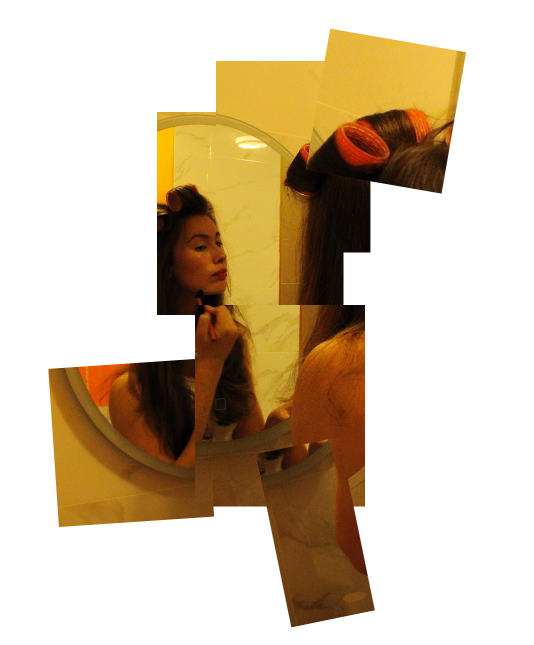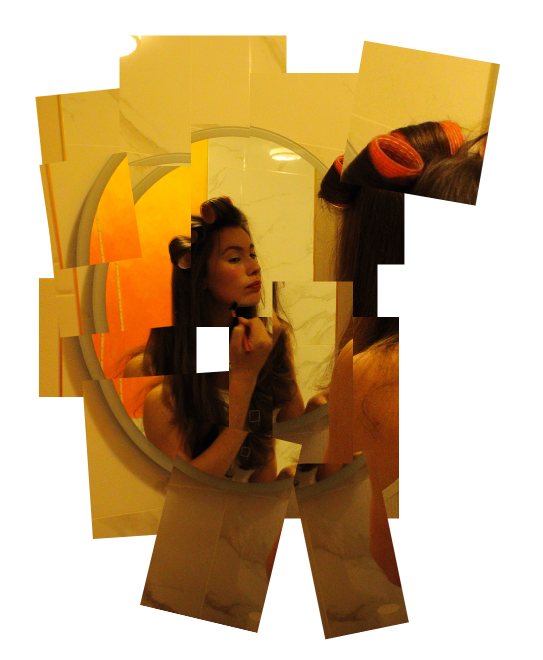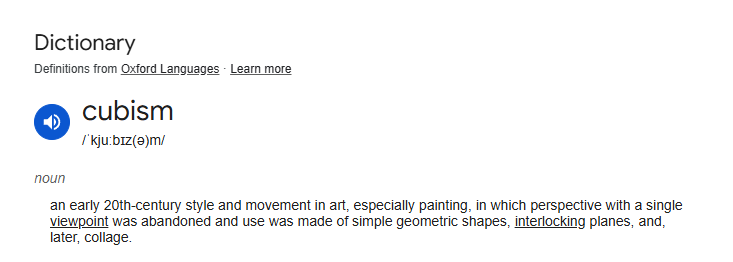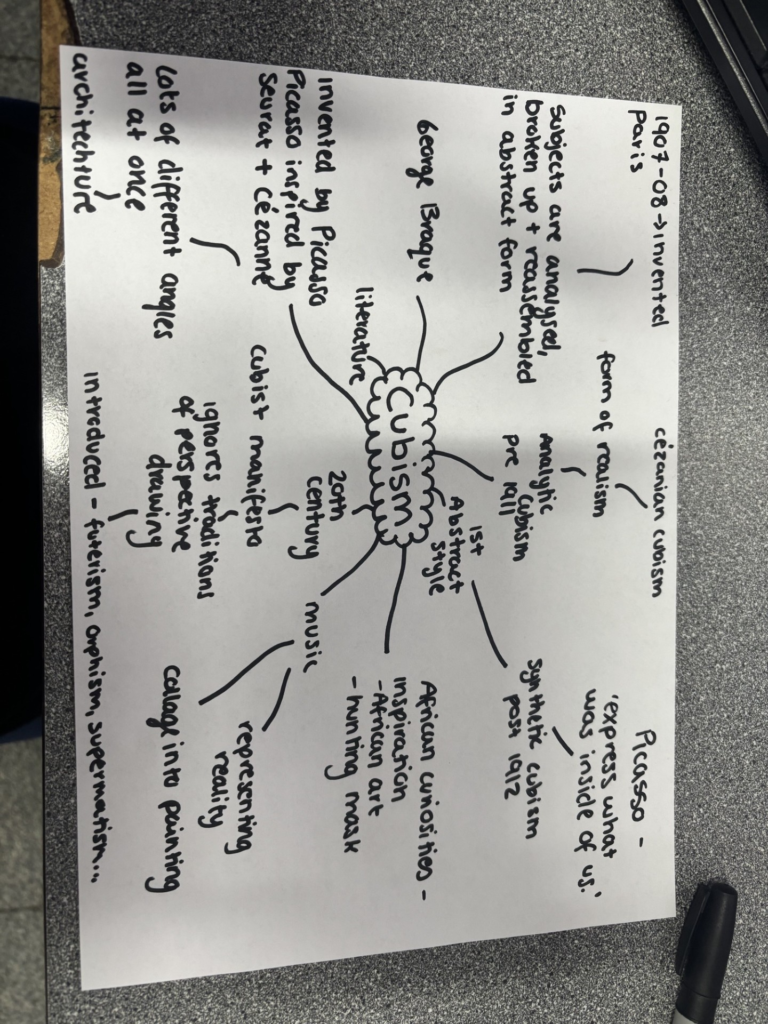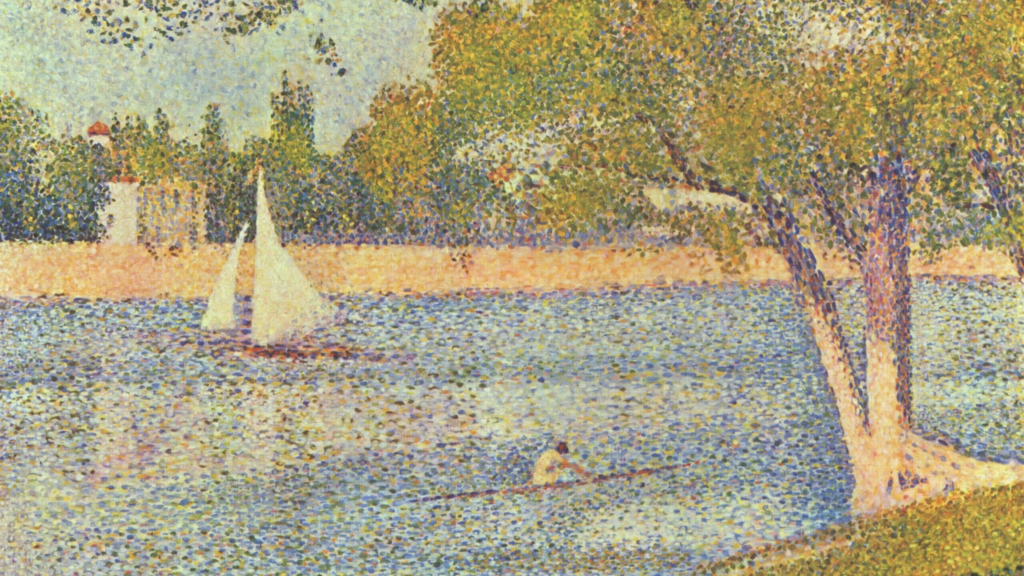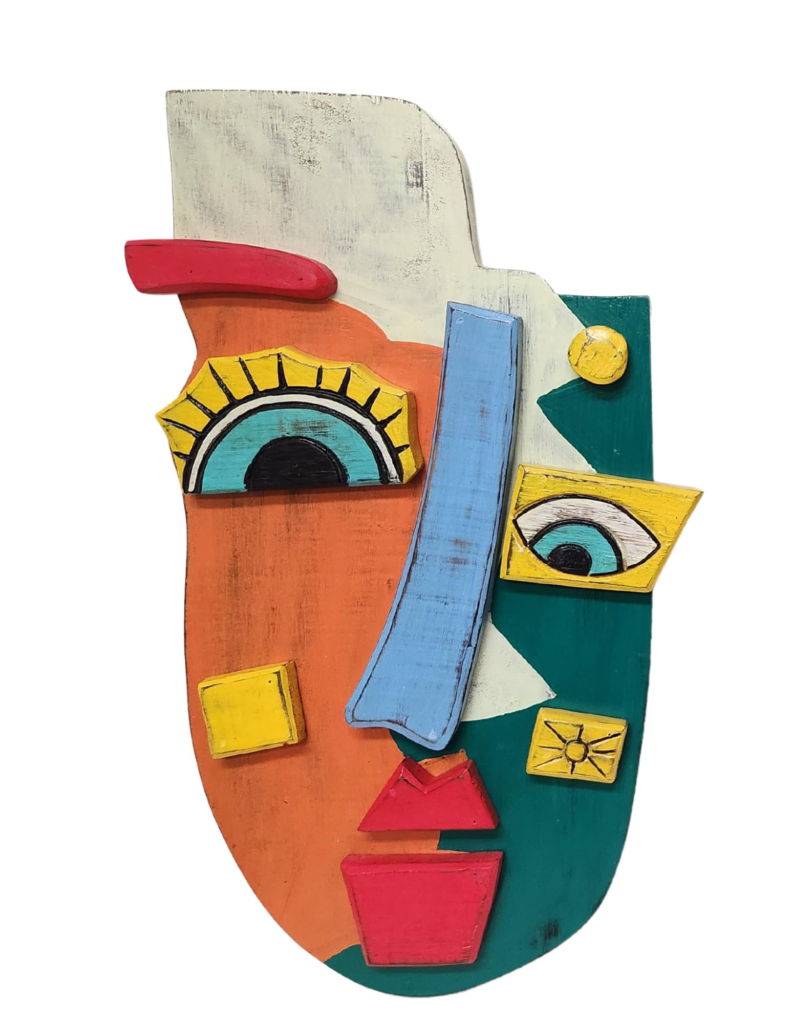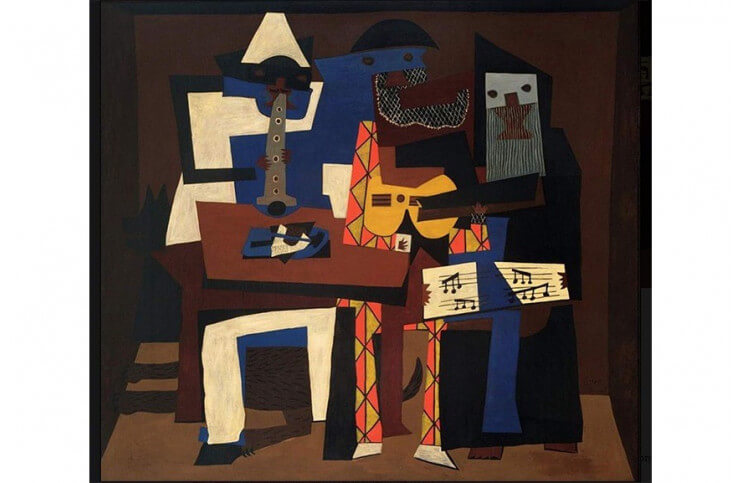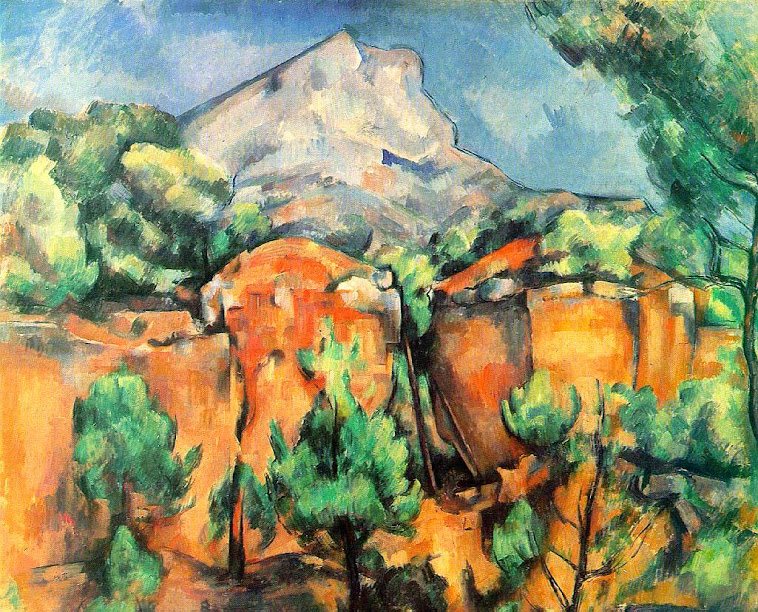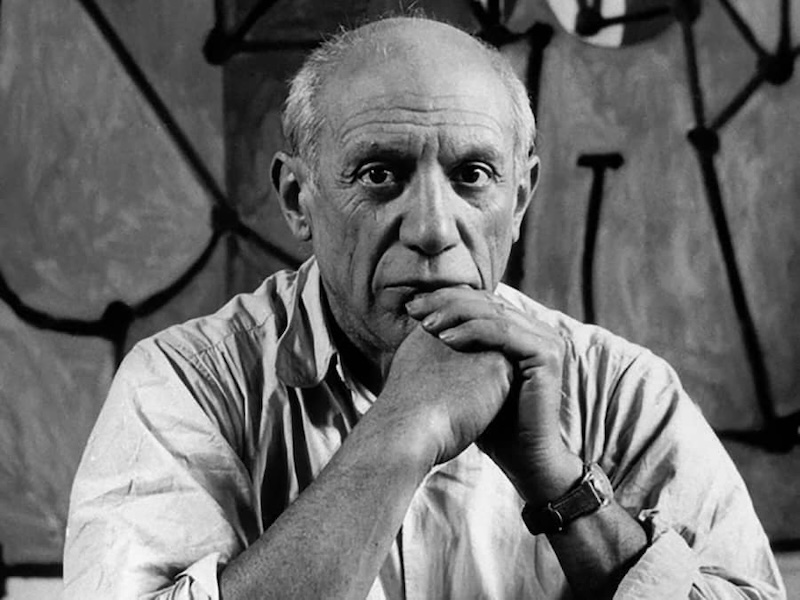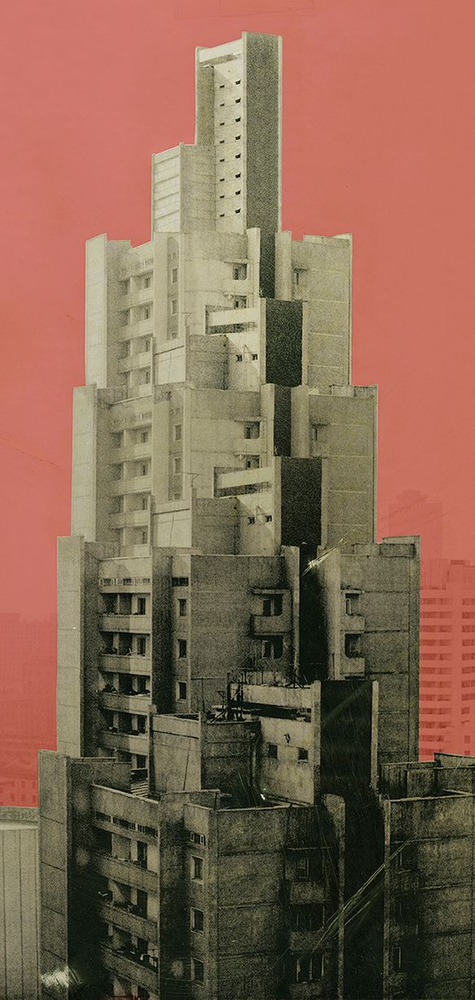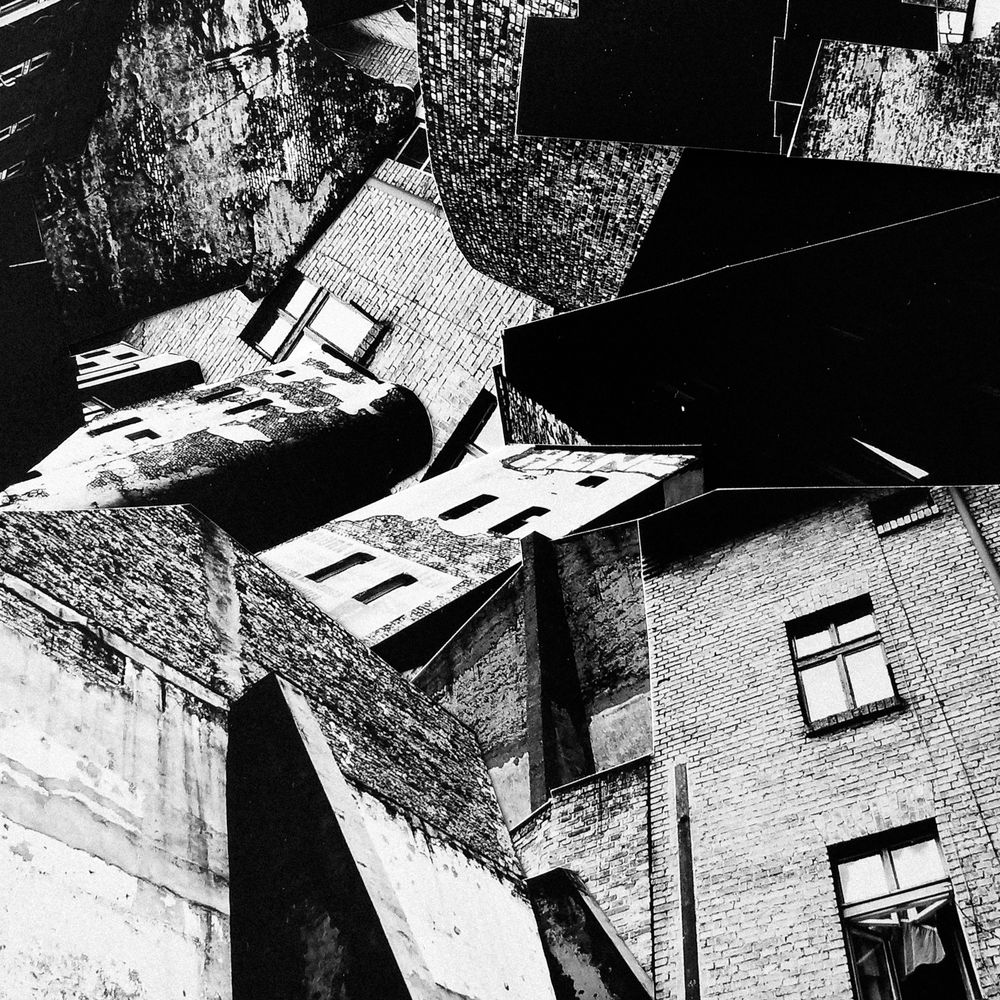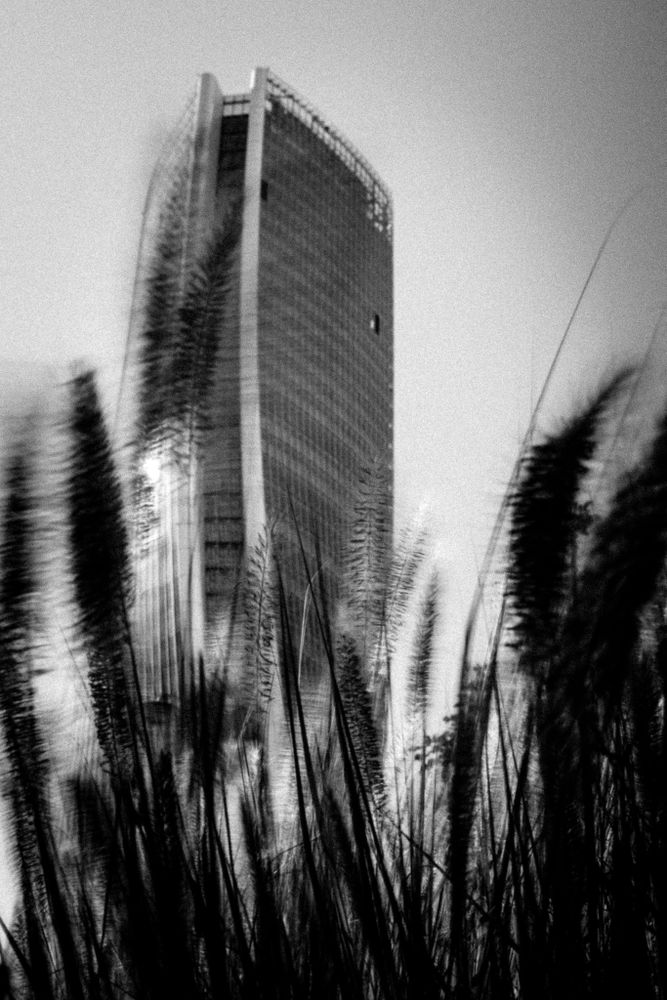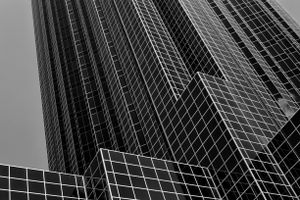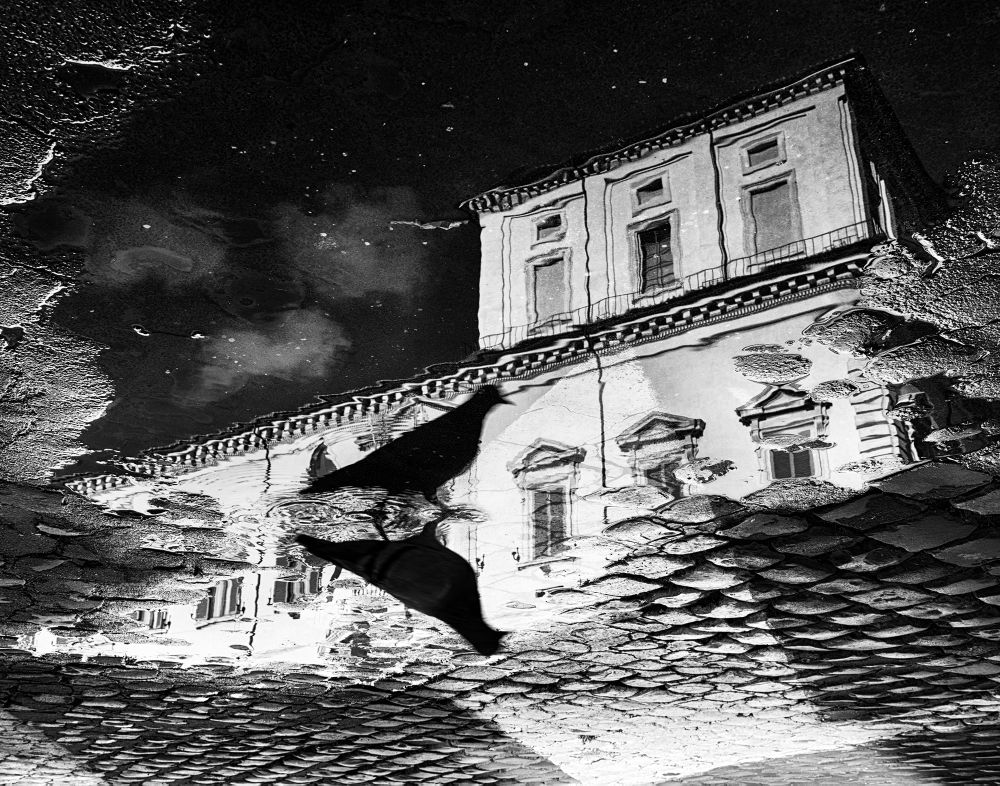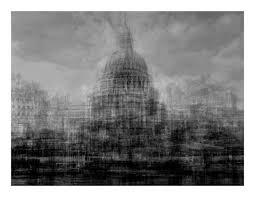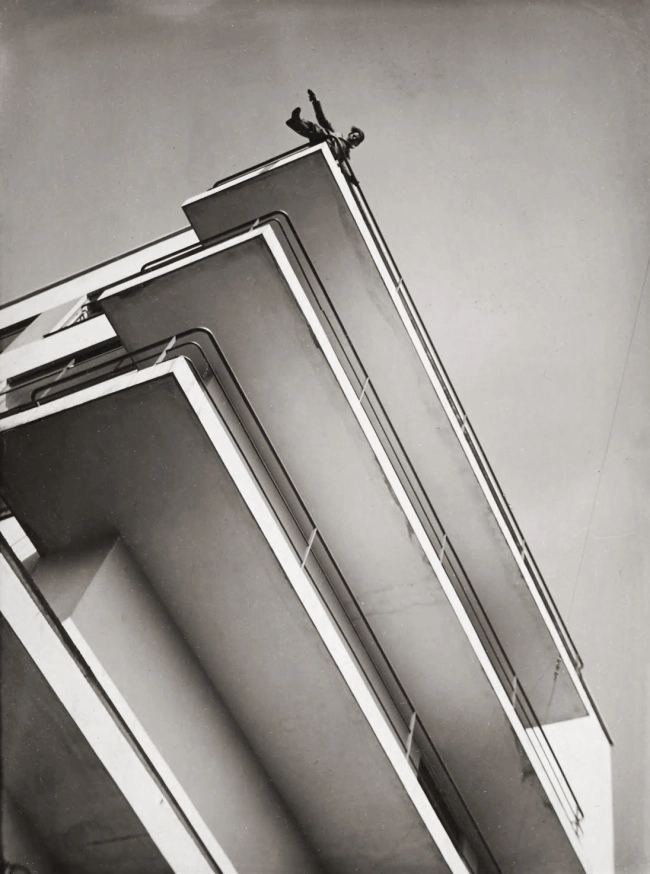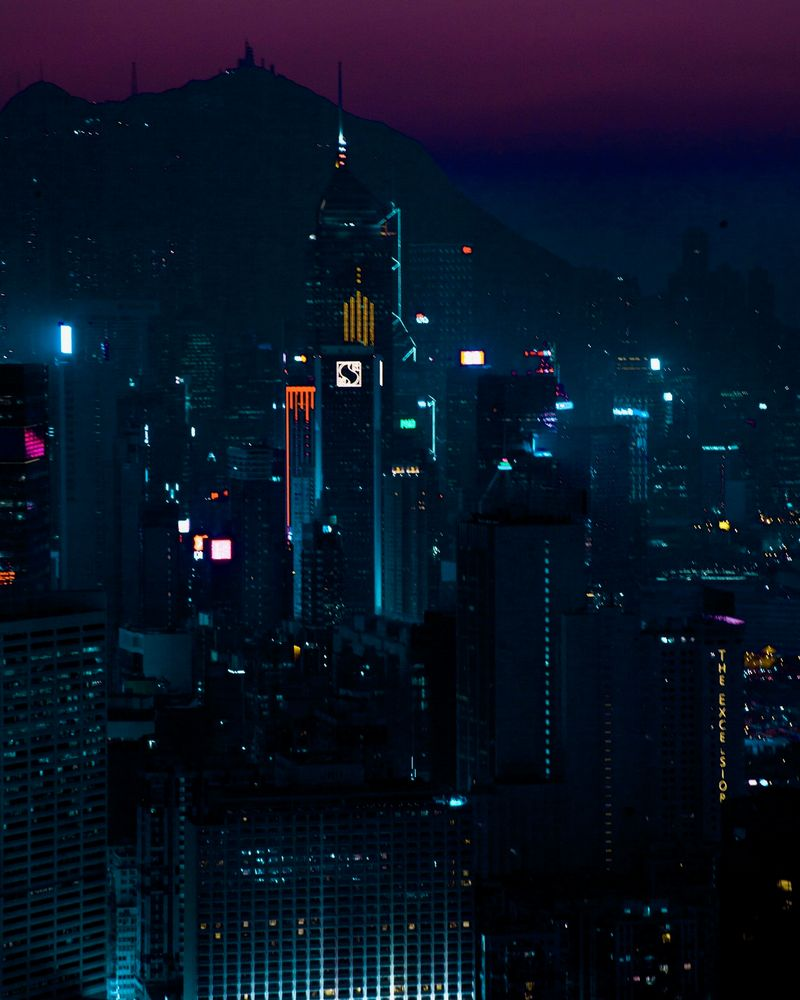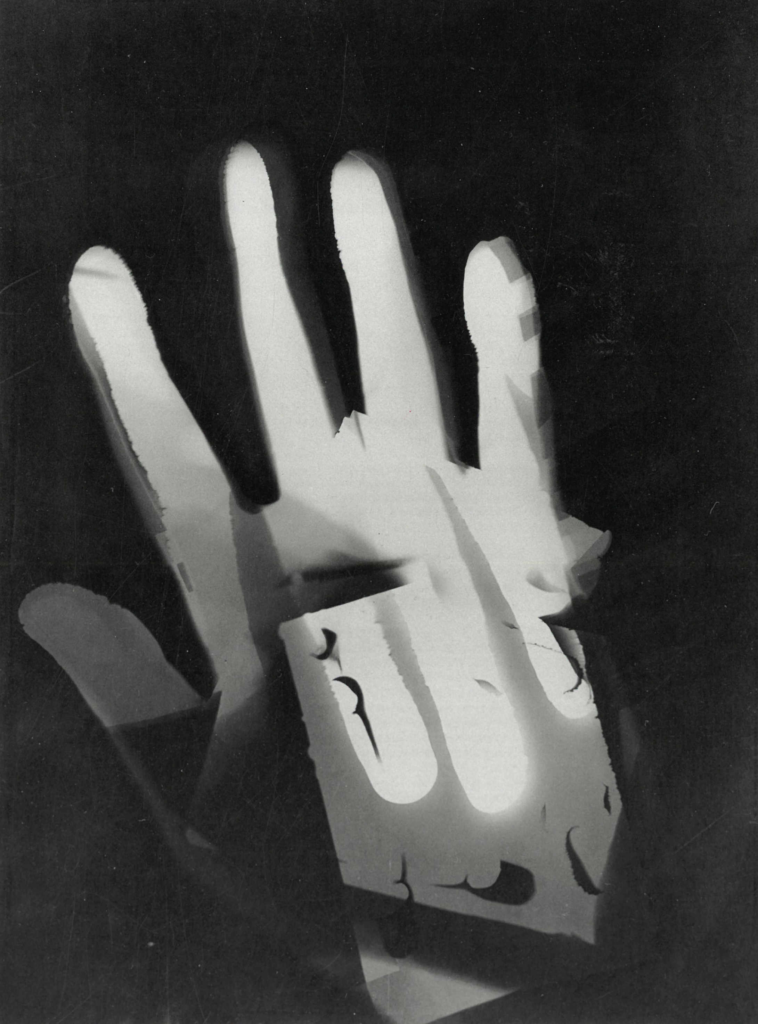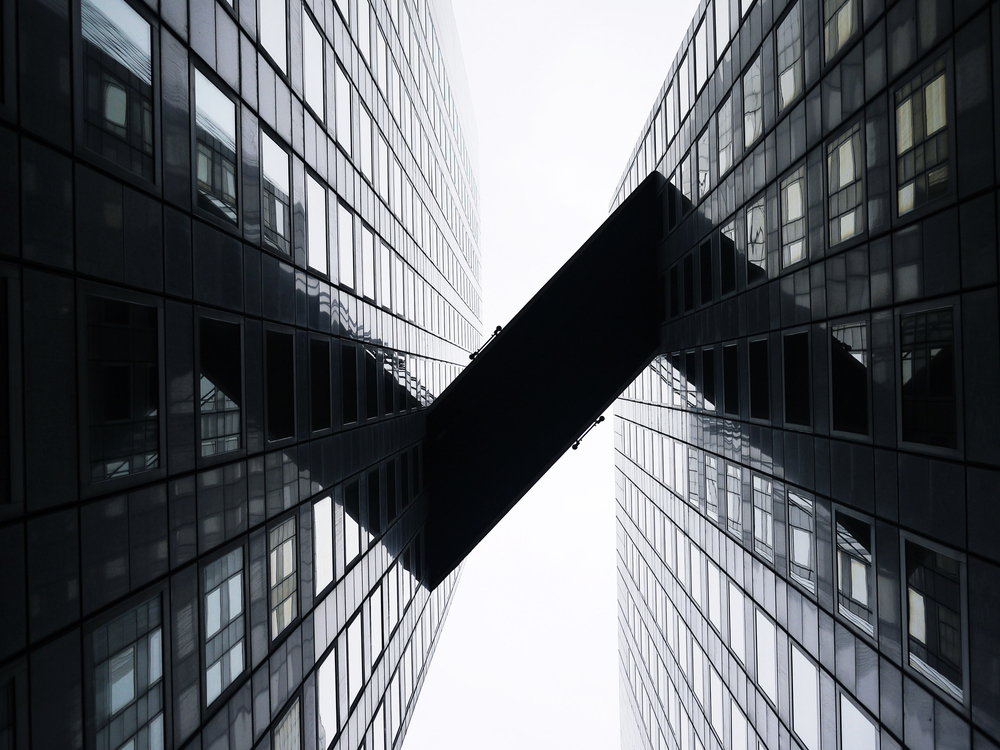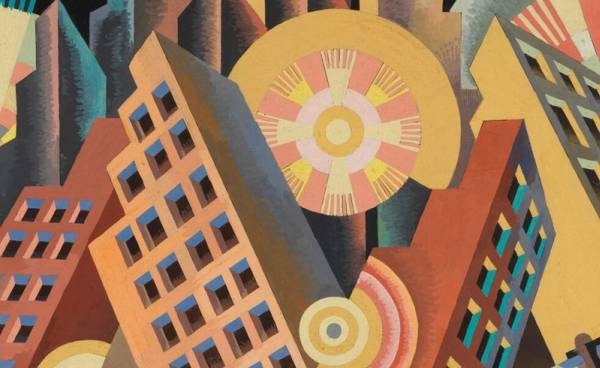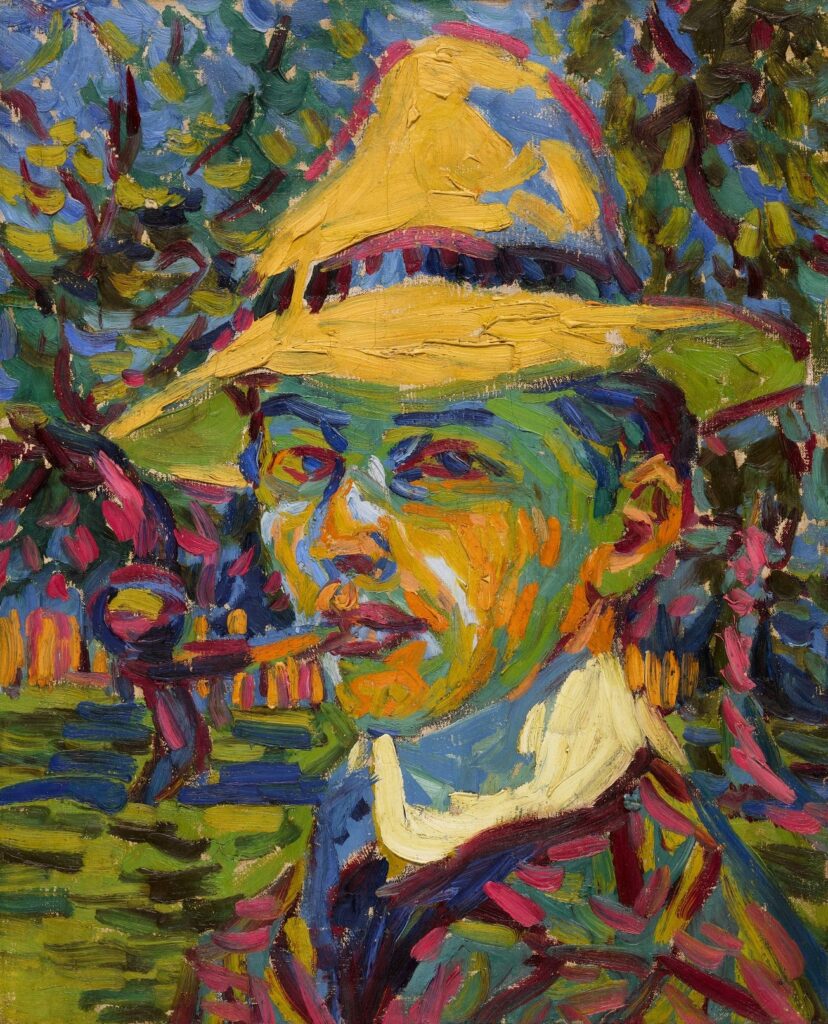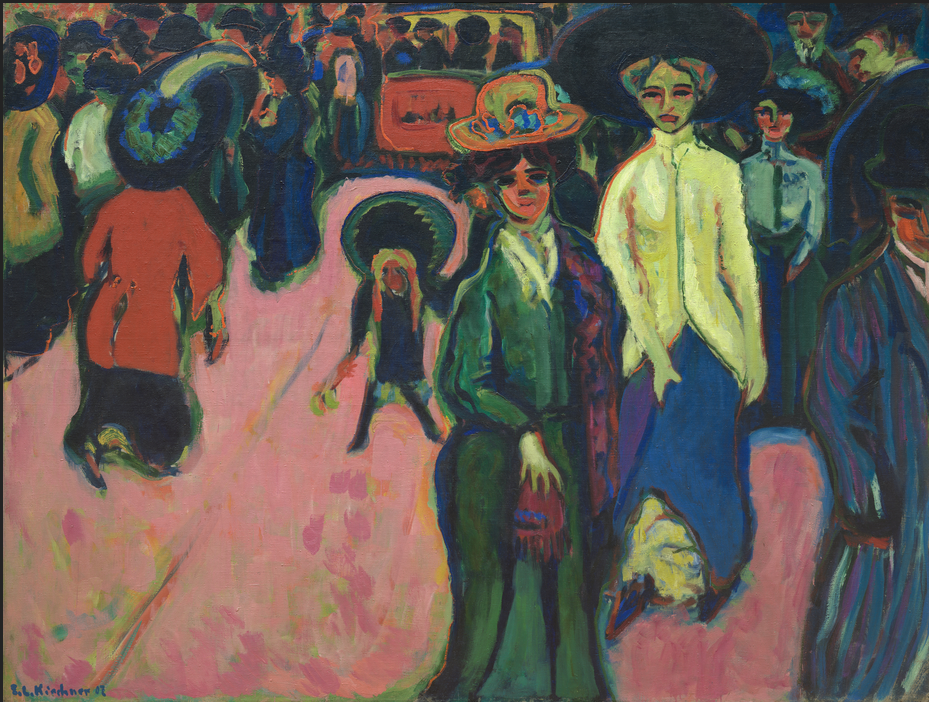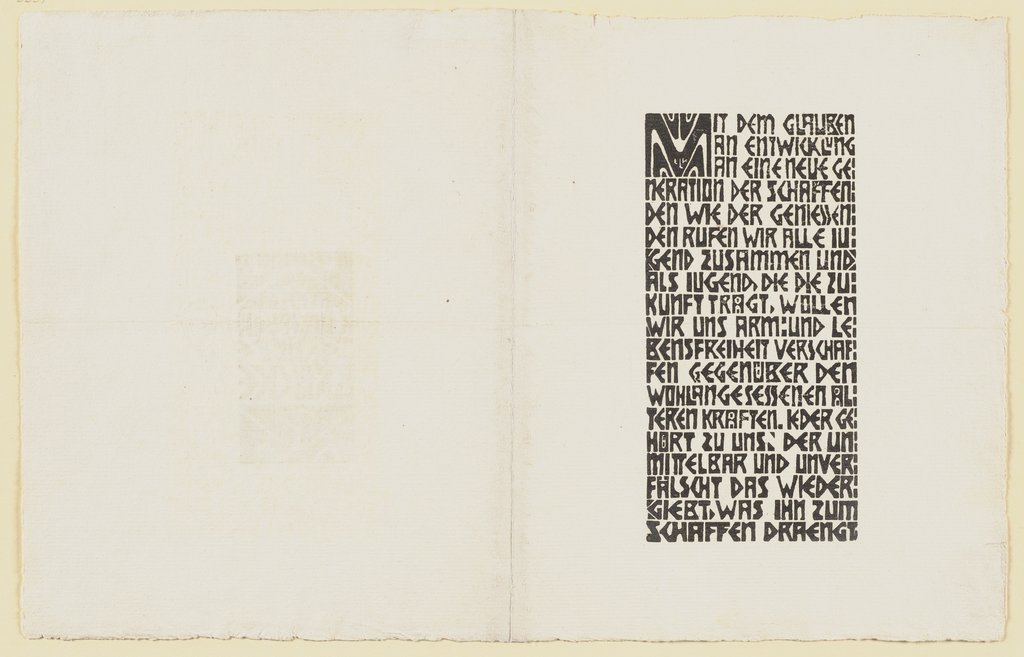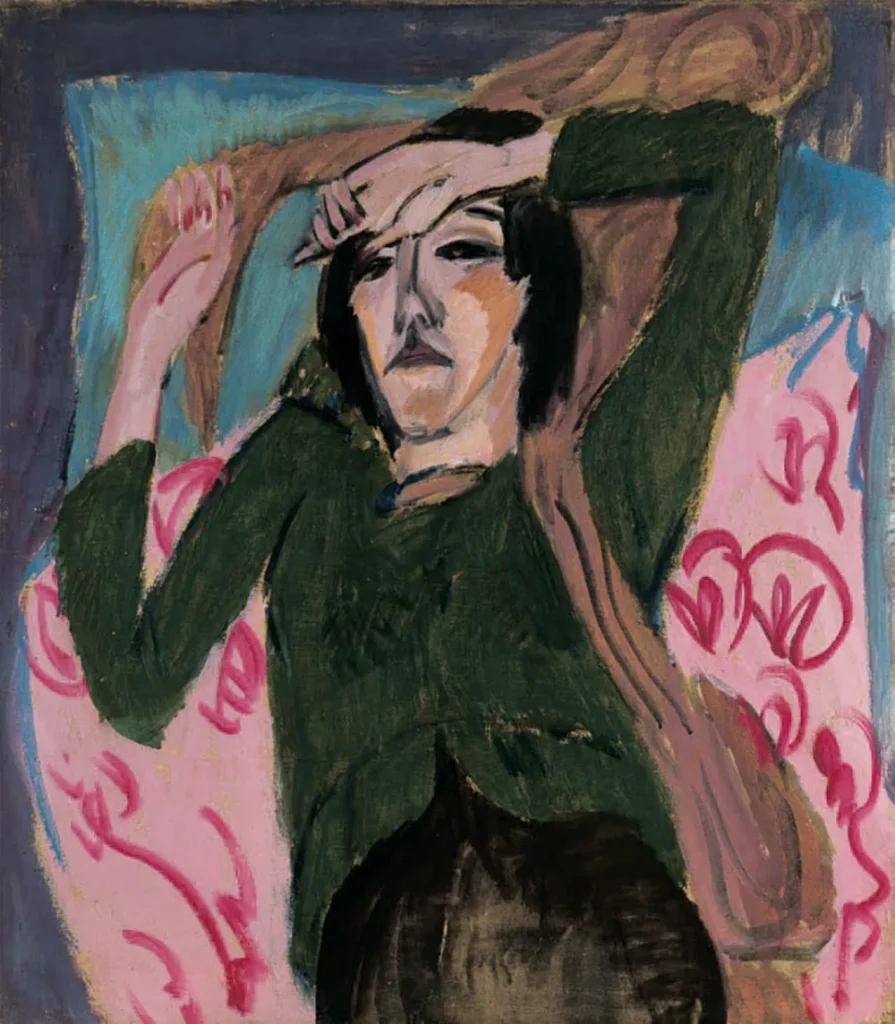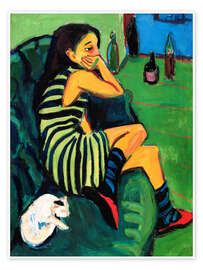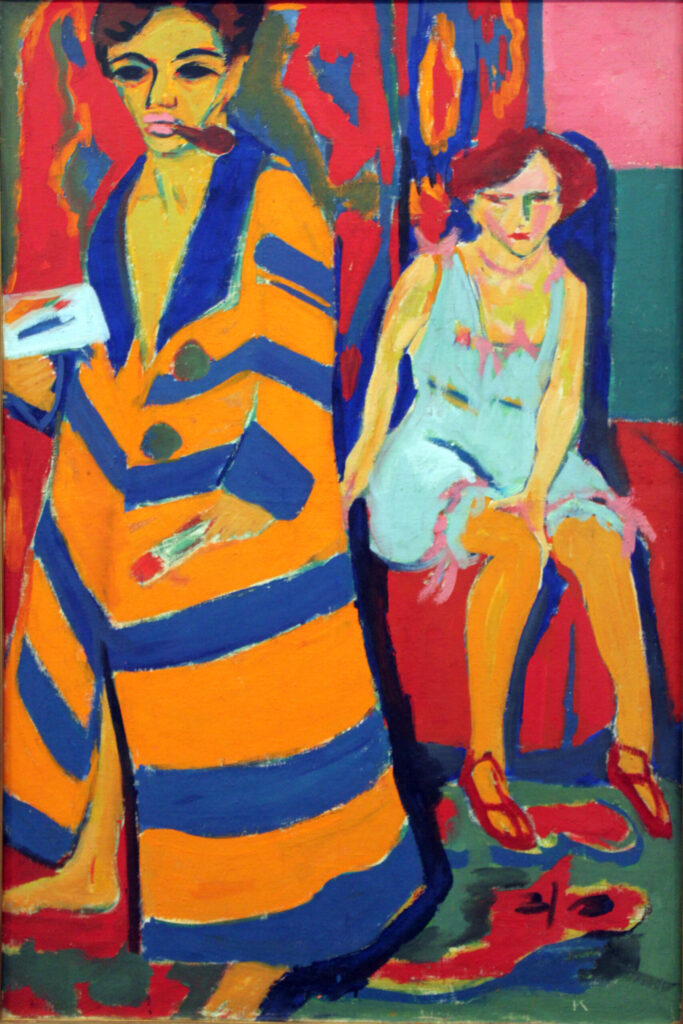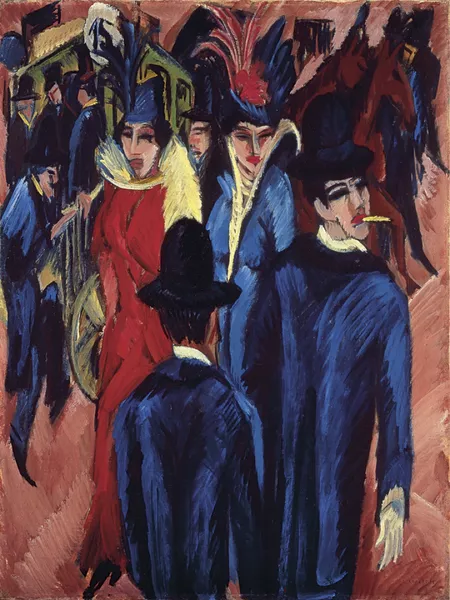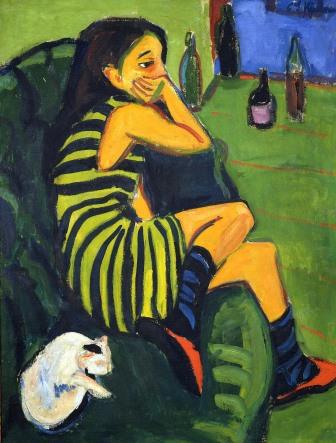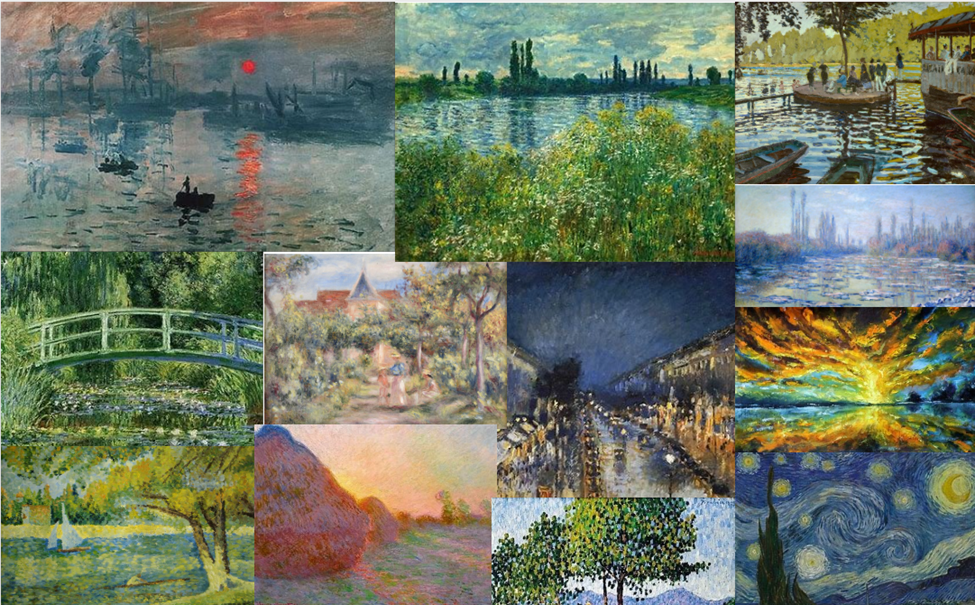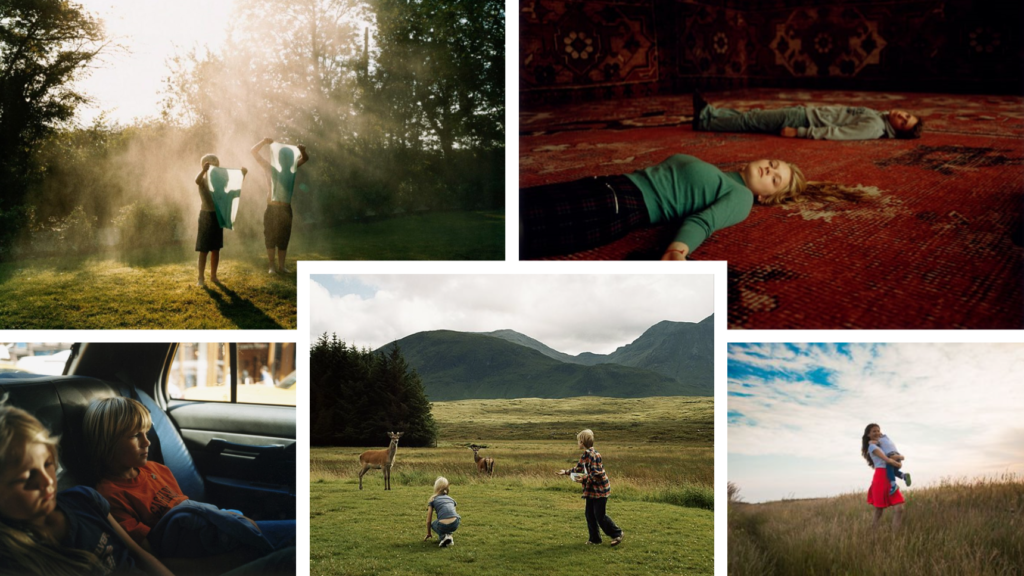David Hockney
David Hockney was born 9th July 1937 and is an English painter and photographer. He is an important contributor to the pop art movement of the 1960’s and he is considered one of the most influential British artists of the 20th and 21st century. David Hockney was born in Bradford, West Riding of Yorkshire, England, the fourth of five children of Kenneth Hockney and Laura nee Thompson. He was educated at Wellington Primary School, Bradford Grammar School and Bradford College of Art.
At the Royal College of Art, Hockney featured, alongside Peter Blake in the exhibition New Contemporaries, which announced the arrival of British Pop art. He was associated with the movement, but his early works display expressionist elements as well.
When the RCA said it would not let him graduate if he did not complete an assignment of a life drawing of a live model in 1962, Hockney painted Life Painting for a Diploma in protest. He had refused to write an essay required for the final examination and said that he should be assessed solely on his artworks. His talent was recognised and he began growing his reputation. The RCA then changed its regulations and awarded him a diploma. After leaving the RCA, he taught at Maidstone College of Art, University of Iowa in 1964, University of Colorado, Boulder in 1965, University of California, Los Angeles from 1966 to 1967 and then at the University of California, Berkeley in 1967.
In 1946 he moved to LA where he was inspired to make a series of paintings of swimming pools in an acrylic medium using vibrant colours. He also captured the local surroundings of his hometown Yorkshire by painting the countryside in both oils and watercolours. Hockney has experimented with painting, drawing, printmaking, watercolours, photography, and many other media including a fax machine, paper pulp, computer applications and iPad drawing programs. The subject matter of interest ranges from still lifes to landscapes, portraits of friends, his dogs, and stage designs for the Royal Court Theatre, Glyndebourne, and the Metropolitan Opera in New York City.
From 1999 to 2001 Hockney used a camera lucida for his research into art history as well as his own work in the studio. He created over 200 drawings of friends, family, and himself using this antique lens-based device.
Hockney explored printmaking and in 1976–77 Hockney created The Blue Guitar, a suite of 20 etchings, each utilising Crommelynck’s techniques and filled with references to Picasso. The frontispiece to the suite mentions Hockney’s dual inspiration; “The Blue Guitar: Etchings By David Hockney Who Was Inspired By Wallace Stevens Who Was Inspired By Pablo Picasso”. The etchings refer to themes in a poem by Wallace Stevens, The Man with the Blue Guitar.
Joiners
Hockney began to produce photo collages in the early 1980’s, which in his early explorations within his personal photo albums, he referred to as ‘joiners.’ He first used Polaroid prints and subsequently 35mm, commercially processed colour prints. Using Polaroid snaps or photolab-prints of a single subject, Hockney arranged a patchwork to make a composite image, which presented different perspectives and angles, similarly to cubism, because the photographs were taken at slightly different perspectives and at different times. One of Hockney’s major aims was discussing the way human vision works, which he explored through cubism. Some pieces are landscapes, such as Pearblossom Highway #2, others portraits including Kasmin 1982; and My Mother, Bolton Abbey, 1982.

The creation of the ‘joiners’ occurred accidentally, when he noticed in the late 1960’s that photographers were using cameras with wide-angle lenses. He did not like these photographs because they looked somewhat distorted. While working on a painting of a living room and terrace in Los Angeles, he took Polaroid shots of the living room and glued them together, not intending for them to be a composition on their own. On looking at the final composition, he realised it created a narrative, as if the viewer moved through the room. He began to work more with photography after this discovery, stopping painting for a while to pursue this new technique exclusively.
However over time, he discovered what he could not capture with a lens, saying: “Photography seems to be rather good at portraiture, or can be. But, it can’t tell you about space, which is the essence of landscape. For me anyway. Even Ansel Adams can’t quite prepare you for what Yosemite looks like when you go through that tunnel and you come out the other side.” Frustrated with the limitations of photography and its ‘one-eyed’ approach, he returned to painting.
His Work
Joiners-






Paintings-
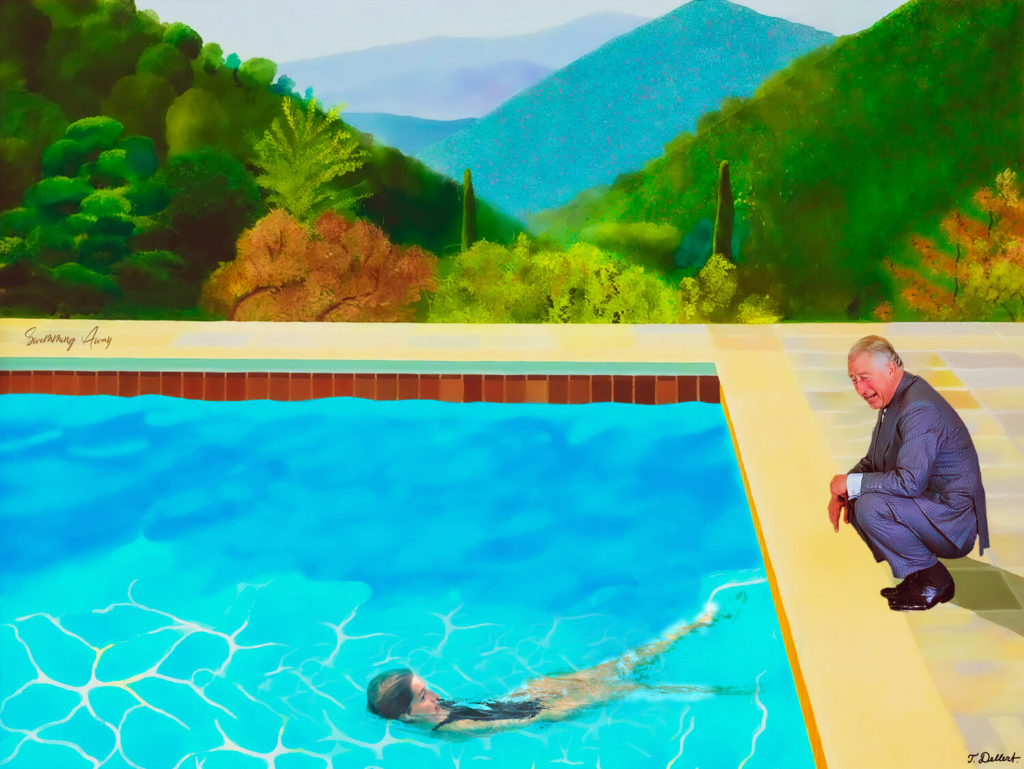

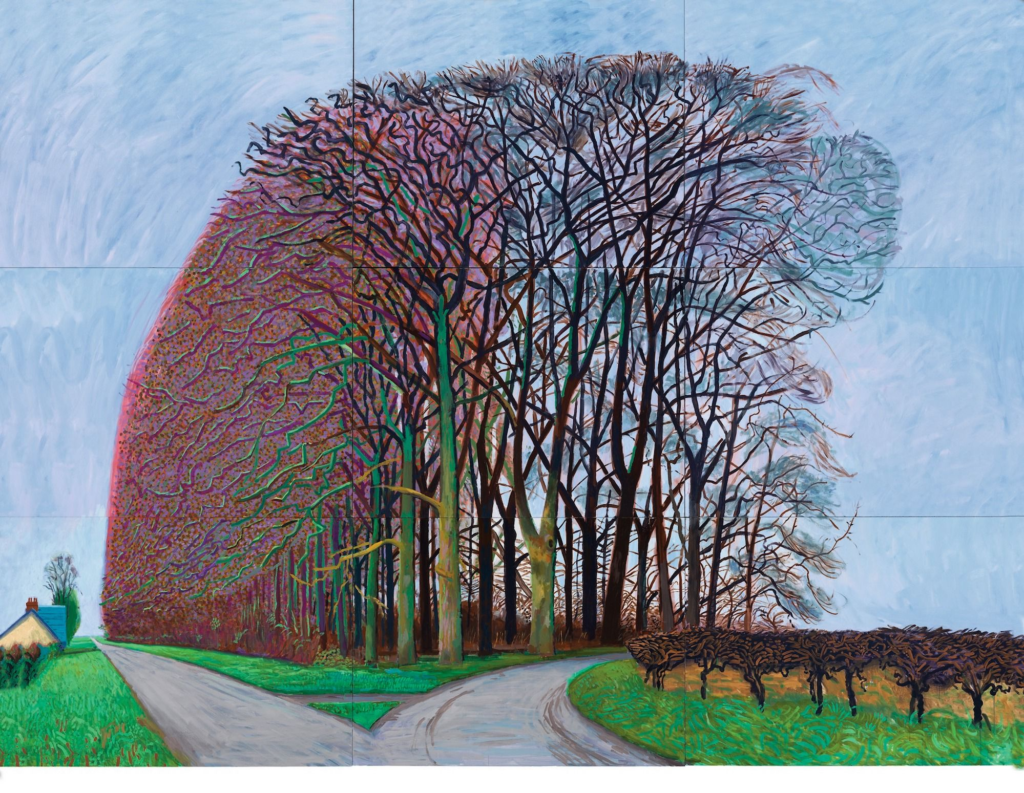
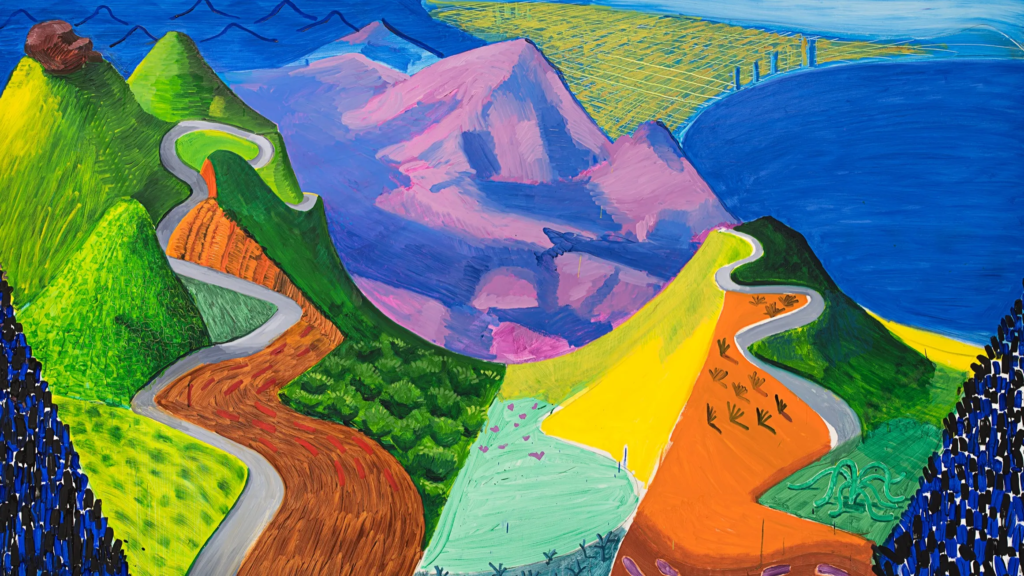
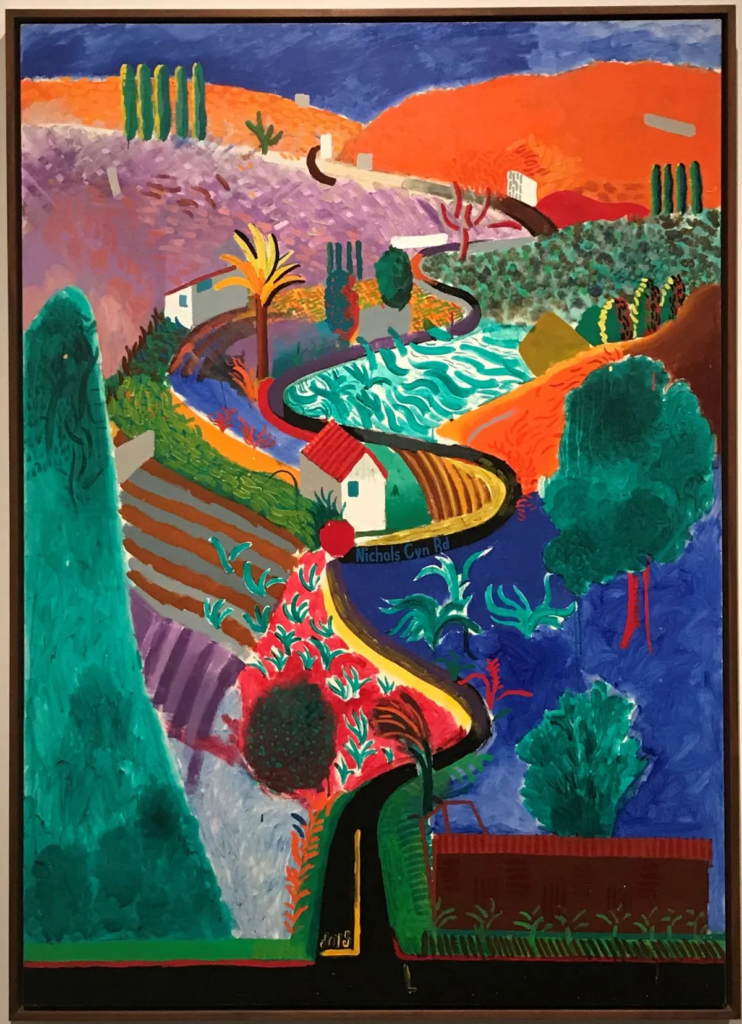
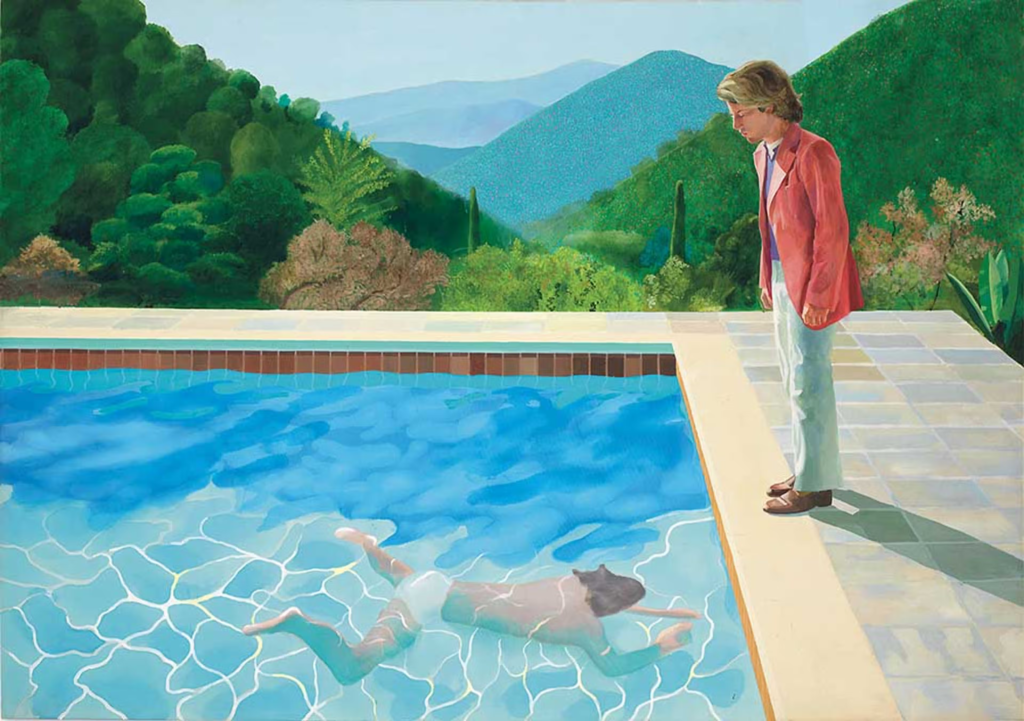
Analysis of 1 Photograph and 1 Painting
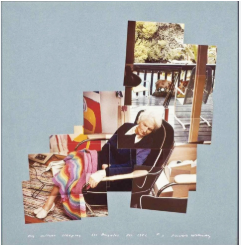
This collage consists of multiple Polaroid images all taken at slightly different angles and at slightly different times and they are then pieced together in an abstract way, similar to cubism (joiners). The Polaroids in this image use natural lighting coming in from the outdoors through the door in the background. There are also high levels of control in these photographs, as Hockney has manipulated the angle and timing of which he has taken the photos. He also has high levels of control when piecing together the Polaroids, so he could create a unique arrangement each time. Each Polaroid presents contrast between the one arranged next to it, as they display a slightly different setting/object at a slightly different angle/ perspective.
There are a range of different colours in this ‘joiner,’ including the blue background, the green and brown in the background of the outdoors Polaroid, white, red, yellow, blue and pink, in all different shades and tones. There are also lots of light and dark tones throughout this image due to the natural sunlight shining through the backdoor, compared to the more shaded indoor Polaroids. Some different textures can also be seen through the images, due to the texture of the outdoors and the objects, such as the blanket indoors.
There are lots of different Polaroids, which are all square shape, which are pieced together to create a new unique form each time they are arranged and rearranged, which presents a range of different perspectives and angles in doing so. The main viewpoint in the image is the old lady sat on the chair in the centre and foreground of the frame. The overlapping of images also creates a slight depth of surface illusion.
This ‘joiner’ relates the the Art Movement Cubism, as it presents a range of different angles and perspectives in an abstract way. Hockney also used a range of bright colours, which is also common in Synthetic Cubism.
The idea behind this image is also a lot deeper, as the process of taking multiple different images all at different times and different angles and printing them out and then having to arrange them in an aesthetic and unique way takes a lot of time, which I think is symbolised through the old women in the picture, as he often takes images of older people when creating his joiners.

This image contains a range of bright vibrant colours, such as blues, greens, yellows, reds, blacks, whites, oranges, purples and greys in all different shades. This painting is also very abstract, as it displays a range of different angles and perspectives, similarly to cubism, and because of all the bright colours used in this painting it relates to Synthetic Cubism the most. There is also a range of light and dark shades, as well as different warm and cool tones. Hockney has done this to create a depth of surface illusion in the painting, so different angles and perspectives can be viewed.
Hockney also presented a range of different shapes throughout these paintings in order to create a unique form with a range of angles and perspectives, as well as using different textures to do so. To create these different textures he used a range of different brush strokes and artistic techniques. The layout of these shapes and textures creates a depth of surface illusion that leads the viewpoint from the bottom of the canvas to the top of the canvas.
My Inspiration
For my photoshoots I am going to experiment with the ‘joiners,’ by taking multiple photographs at slightly different angles at slightly different times and I am going to print them up, so I can assemble them in a unique form, just how Hockney did.
I am also going to experiment with the notion of time, just how he has in his work, but I am going to do it in a slightly different way, as instead of using elderly people I am going to show the process time has on my family members. For example, I am going to use archive images of my family members and create ‘joiners’ with photographs I take of them now. However, Hockney also took pictures of people he loves, as he wanted to capture his relationships with the people he loved, including men he loved and spent time with and his parents, so I am also going to do the same as I am going to take pictures of my family members (the people I love).


